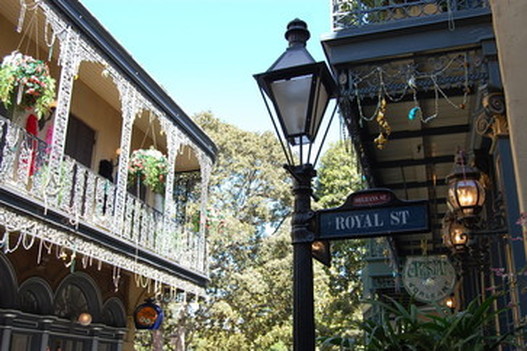|
de Pauger laid out a simple grid system, starting at the river, and going back to a fortified rampart several blocks back. He named the first street along the river Rue Victorie, then Rue Chartres, Rue Royale, followed by Rue Bourbon and Rue Dauphine. Rue Victorie (later re-named by the Americans to honor Admiral Stephen Decatur) was the hub for waterfront commerce, and businesses related to shipping and the port sprang up there. Because it passed in front of St. Louis Cathedral and the main government building of the colonial period, the Cabildo, Rue Chartres is where many of the more influential and wealthy residents built homes.
|
Royal Street is one of the oldest streets in the city, dating from the French colonial era, and is known today for its antique shops, art galleries, and stately hotels. Royal Street is the best-known street in the French Quarter beside Bourbon Street. In 1720, Jean-Baptiste LeMoyne, Sieur d’Bienville, convinced his brother, Pierre (Sieur d’Iberville) that a crescent-shaped location along the Mississippi River would make a better capital for the French colony of Louisiana. Bienville appointed an engineer, Adrien de Pauger, to design a street plan for the city of Nouvelle Orleans.
|
Antique Vintage and Estate
|
British Antiques LLC
|
Cohen James H & Sons Inc
|
David's Antiques & Jewelry
|
French Antique Shop Inc
|
Harris Antiques Ltd
|
Ida Manheim Antiques
|
Jack Sutton Antique & Jewelry Co
|
Keil's Antiques
|
Moss Antiques
|
Maison Royale
|
M.S. Rau Antiques
|
Rothschild's
|
Royal Antiques Ltd
|
Sutton Galleries
|
The Brass Monkey
|










